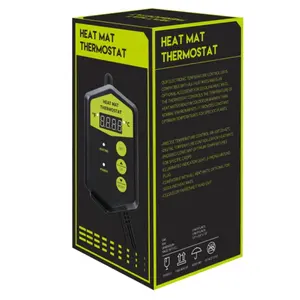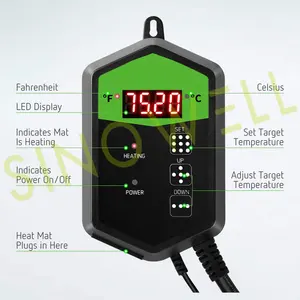Introduction to Honeywell WiFi Thermostat Installation
In today's energy-conscious world, Honeywell WiFi thermostat installation represents a pivotal step in enhancing comfort and efficiency within your home or office. These innovative devices not only allow for remote access but also optimize heating and cooling schedules based on user behavior, leading to significant savings on energy bills. Whether you are a homeowner looking to upgrade your existing system or a contractor seeking reliable installation information, understanding the nuances of Honeywell WiFi thermostat installation is crucial.
Types of Honeywell WiFi Thermostats
When considering Honeywell WiFi thermostat installation, it is essential to understand the various models available to ensure the best fit for your specific needs:
- Honeywell Home T9: Designed with room sensors, it customizes your home's temperature based on occupancy and your preferred climate settings.
- Honeywell Home T10 Pro: Ideal for professional use, this model offers advanced features like multi-room zoning, allowing complete temperature control throughout different areas.
- Honeywell RTH9585WF: A user-friendly touchscreen thermostat that integrates seamlessly with smart home systems and features voice control compatibility.
- Honeywell Lyric T5: This thermostat combines versatility with smart home integration and has geofencing capabilities that adjust the temperature based on your location.
How to Install the Honeywell WiFi Thermostat
The Honeywell WiFi thermostat installation process is straightforward, but attention to detail is vital for optimal performance. Follow these steps to ensure a smooth installation:
- Gather Tools and Materials: Before starting, ensure you have the following tools: a screwdriver, drill, level, and wire stripper, along with the necessary connectors and labels for wiring.
- Turn Off Power: Safety first! Always turn off the power at the breaker before handling any electrical components.
- Remove the Existing Thermostat: Carefully detach the old thermostat, noting the wire connections. Using labels to mark these wires will help during the installation of the new unit.
- Mount the New Thermostat: Attach the mounting plate of the Honeywell thermostat to the wall. Ensure it is level and secure before proceeding.
- Connect the Wires: Connect the labeled wires to their corresponding terminals based on the installation guide. Verify that the connections are tight and secure.
- Attach the Display: After wiring, attach the thermostat display to the mounting plate and ensure it clicks securely into place.
- Restore Power: Turn the power back on at the breaker and test the thermostat to ensure it is running properly. Follow the on-screen prompts to connect to your WiFi.
Features and Advantages of Honeywell WiFi Thermostat Installation
Choosing Honeywell for your thermostat solution comes with numerous benefits that enhance your overall experience:
- Remote Access: Control your thermostat from anywhere using the Honeywell Home app, providing ultimate convenience and flexibility.
- Energy Savings: Smart scheduling and geofencing features automatically adjust temperatures based on your routine, leading to cost-effective energy usage.
- User-Friendly Interface: The large touchscreen display allows easy navigation and adjustments, making it accessible for all family members.
- Smart Home Integration: Easily integrates with platforms like Amazon Alexa, Google Assistant, and Apple HomeKit for voice-control capabilities.
- Alerts and Reminders: Stay informed with system alerts and filter change reminders sent directly to your device, ensuring your thermostat remains in optimal working condition.
In conclusion, Honeywell WiFi thermostat installation is an investment in comfort, energy efficiency, and modern convenience. By understanding the different types available, how to install them correctly, and the features they offer, you're well-equipped to enhance your living or working environment effectively.










































